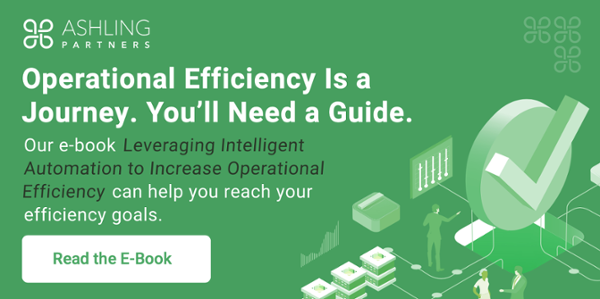In general, business processes are hard to manage, improve, and understand. Because of the high volume of these processes and variations in how users execute them, drilling down into processes to optimize them is challenging without a framework. Process mining provides just that, with data-driven revelations on workflows.
When companies begin the journey of process mining, there can be bumps in the road. Most of them arise due to differences between expectations and reality. In this post, we’ll explain the gaps in expectation versus reality of process mining and provide best practices for the technique.
What Is Process Mining?
Process mining is a technique that uses data from enterprise systems to visualize how a transaction flows through a process. The data, derived from logs and transactions, tells the “true” story of a process. With this truth in hand, you’ll have accurate insights into every task, the time it takes, who performs them, and other business contexts.
How Process Mining Works
Software systems log every action, whether executed by a person or a bot. Those records create event logs, which are the basis for process mining visualizations.
Process mining enables you to understand any gaps in the process and identify opportunities for automation solutions.
If you’re venturing into process mining, you may have specific expectations, both positive and negative. Below, we’ll discuss some ways those expectations may not align with the reality of process mining.
What Are the Expectations of Process Mining?
When organizations elect to implement process mining, they may have misconceptions about how it works and the results they can expect.
One common misconception is that process mining tools are too complex or too difficult to implement. This mindset can lead organizations to avoid process mining entirely, causing them to lose out on the value associated with process mining and the ability to improve their workflows.
However, this fear is unfounded. Some platforms use algorithms and advanced data transformation to produce these visualizations with little effort.
Let’s dig into a few more false expectations associated with the new deployment of process mining:
Process mining won’t reveal deviations.
Data builds the visualization, so deviations will come to light if they exist. If there’s a log of the task, process mining will uncover it, regardless of whether it’s an “approved” step.
Process mining only tells you where to automate.
Looking at process mining as the definer of automation is inaccurate. Rather, it’s a continuous process improvement (CPI) tool. When using it in this way, process mining illustrates how transactions flow through the system with details on delays and who the users are.
Process mining delivers full transparency, so you can properly focus on the deviations from the norm and address them. Addressing them could involve automation but might also include training, reporting, and business process re-engineering.
Process mining requires a particular level of effort and yields the same value for everyone.
Optimizing processes is an investment in time and resources. Some companies have big objectives to tackle the most complex workflows, which can work as long as you balance the effort and value. Conversely, others begin with simple tasks. Ultimately, what you choose to mine depends on the accessibility of the data, the adaptability of the business unit involved, and the effort required to achieve value.
Process mining is one and done.
Process mining is an ongoing exercise because it’s a CPI tool. The first time you do it, you find areas to improve that deviate from the norm through automation, people, and processes. After improving these things and having processes run for a while, you can mine again. Doing so helps you measure the impact of the changes you made and find new areas for improvement.
Process mining only works for one source system.
Process mining applies to multiple platforms your business uses. You aren’t limited in how you can implement and use it across your enterprise. You can also leverage it to determine how applications or systems work together in sharing information that’s part of a task.
With those misconceptions cleared up, let’s look at the reality of using process mining.
What Are the Realities of Process Mining?
Process mining is not a hard tactic to leverage across your lines of business, and this strategy will drive significant benefits for your organization.
The reality of process mining is that it becomes the foundation for intelligent automation (IA) and the truth in business operations. According to a 2020 report, 78 percent of people who use automation said process mining was a key enabler. Another survey of CFOs found that they consider process mining the key to delivering returns from technology.
Applying process mining before developing automation gives you an end-to-end picture of a process. With this picture, you can connect all the dots of a process and fully understand it before automating it.
Here are some examples of process mining realities:
- Insurance companies must manage a lot of data, steps, and documents for most tasks. The more human touches in these tasks, the greater the likelihood of errors and inconsistencies. Using process mining to uncover these inconsistencies can clarify the steps taken in each process, if they’re all necessary, and what you could automate. Ideal tasks for this are claims-related, such as registration, processing, and adjudication.
- Healthcare is another vertical that gains a lot from process mining; many healthcare organizations rely on outdated workflows that need revamping. The industry could apply process mining to scheduling, capacity forecasting, logistics, claims, and more.
Explore More Process Mining Realities
Process mining can be a useful tactic to understand process failures and work toward improving them. You can learn more about process mining by watching our on-demand webinar, “Leveraging Process Mining For Process Understanding, Automation, and Continuous Improvement.”



